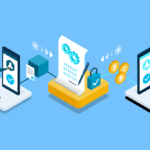The largest hacking system breach in history compromised over 3 billion Yahoo user accounts, demonstrating the devastating reach of modern cyber attacks. Originally, hacking meant modifying technology for improvement. However, since its formal definition in 1975, it has evolved into something far more sinister – a malicious attempt to discover and exploit sensitive information.
In fact, today’s hackers employ various techniques from social engineering to brute force attacks, causing significant damage that goes beyond just stealing money. They can destroy credit ratings, obtain personal information, and even threaten national security. As we rely more on connected devices, from computers to IoT gadgets and ATMs, we must understand these threats to protect ourselves effectively.
We’ll explore the evolution of hacking systems, reveal how modern attacks work, identify vulnerable areas in your computer, and show you clear warning signs of a compromised system.
The Evolution of System Hacking Through History
Unlike popular belief, hacking originated not with computers but with telephone systems. Phone phreaking, the first form of hacking, emerged in the 1960s when curious technologists discovered how to manipulate telephone networks. Most notably, John Draper (nicknamed “Captain Crunch”) used a toy whistle from cereal boxes that generated the exact 2600 Hz tone needed to access long-distance switching systems and make free calls.
From phone phreaking to modern cyber attacks
The 1960s saw the term “hacking” first used at MIT, initially referring to train set modifications before evolving to describe computer optimization. Initially, hackers were technology enthusiasts interested in improving systems, not exploiting them. Subsequently, as personal computers became widely available in the 1980s, hacking shifted dramatically from creative tinkering to potential criminal activity.
Steve Wozniak and Steve Jobs, before founding Apple, were themselves phone phreakers. This connection between phreaking and computing illustrates how early telecommunications exploits laid the groundwork for modern system hacking.
Key milestones in hacking history
The first documented cyber attack actually occurred in 1834 when thieves hacked the French Telegraph System to steal financial market information. Meanwhile, the first computer virus appeared in 1969 at the University of Washington Computer Center.
A defining moment came in 1989 when Robert Morris unleashed the first “denial of service” attack—a worm that replicated excessively through ARPANET, causing extensive damage that lasted for days. This incident marked a turning point, demonstrating the potential for system-wide disruption.
Furthermore, the 1990s saw the term ‘ethical hacking’ coined by IBM Vice President John Patrick in 1995, formalizing the practice of security testing that had been developing since the 1970s when the Air Force commissioned the first penetration test of their systems.
How hacking techniques have become more sophisticated
Modern hacking has evolved far beyond simple scripts and brute force methods. Today’s cyber threats employ artificial intelligence, machine learning, and social engineering to navigate systems with unprecedented finesse. Hackers continually refine their approaches, creating polymorphic malware that changes form to evade detection.
Additionally, as organizations adopt more robust cybersecurity measures, cybercriminals adapt quickly, developing techniques to exploit new vectors. This constant evolution creates an ongoing technological arms race between security professionals and hackers.
The sophistication extends beyond technology—psychological manipulation through social engineering has become a primary attack vector, with hackers recognizing the human element as potentially the weakest link in system security.
How Modern Hacking Systems Actually Work
Hackers employ systematic approaches rather than random attempts when targeting systems. Most attackers are opportunistic, sending phishing emails to thousands of potential victims or scanning for known vulnerabilities. Nevertheless, when conducting targeted attacks, cybercriminals follow specific methodologies that exploit predictable weaknesses.
Common entry points hackers exploit
In 2023, corporate credentials became the primary method for compromising networks, with infostealer-related activity surging by 266%. Organizations face attacks through various entry points, including:
- Phishing campaigns – Emails and messages designed to trick users into revealing sensitive information
- Unpatched software – Outdated programs with known security vulnerabilities
- Remote services – RDP tools rank among the most targeted systems for breaches
- Valid accounts – Compromised credentials purchased from dark web marketplaces
- Third-party relationships – Supply chains providing windows into larger entities
Currently, VPN solutions are prime targets due to their widespread use in providing remote access to corporate networks. The most targeted resources include Citrix products, Cisco’s WebVPN, Pulse Secure VPN, Microsoft Remote Desktop, and GlobalProtect.
The anatomy of a system hack
Modern system hacks typically follow five key stages. First comes reconnaissance, where attackers collect intelligence about their target using tools like Harvester, Nmap, and Shodan. During this phase, hackers identify software, hardware, employee names, and potential vulnerabilities.
Next, attackers enter the weaponization stage, preparing specific tools and techniques based on discovered weaknesses. They then gain initial access through methods like exploiting public-facing applications, compromising remote services, or phishing.
Once inside, hackers move laterally through the network, establishing persistence by installing backdoors or infostealers. These malicious implants allow attackers to monitor activity while mapping valuable assets. The average dwell time for attackers lurking undetected is currently 15 days.
Tools and technologies hackers use today
Today’s cybercriminals employ sophisticated tools including:
Infostealers that extract browser-stored passwords, providing access to cloud services and enterprise resources. Remote Access Trojans (RATs) allow attackers to spy on users, read messages, and hijack webcams. DDoS tools overwhelm servers with invalid requests, making services inaccessible.
Moreover, attackers increasingly purchase “off-the-shelf” packages from other cybercriminals rather than developing custom tools. This cybercrime supply chain enables even less technically skilled individuals to conduct sophisticated attacks.
The Most Vulnerable Parts of Your Computer System
Computer vulnerabilities are essentially the open doors that cybercriminals actively seek to exploit. Understanding these weak points is crucial for effective protection against system hacking attacks.
Operating system weaknesses
Operating systems form the fundamental layer managing hardware resources and providing services for computer programs, making their security critical. OS vulnerabilities primarily stem from programming errors and poor design decisions. Common operating system flaws include:
- Buffer overflow vulnerabilities occur when programs write more data to memory buffers than they can hold
- Privilege escalation enables attackers to gain elevated access to protected resources
- Unpatched software remains one of the largest risks—84% of companies have hosts with high-risk vulnerabilities
- Zero-day exploits target unknown vulnerabilities before vendors can release patches
Half of these vulnerabilities could be eliminated by simply installing updated software. Consequently, organizations often ignore “update available” notifications, creating significant security gaps.
Network vulnerabilities
Network security weaknesses extend beyond software issues. According to security audits spanning 3,500 hosts, 58% of companies had one or more hosts with high-risk vulnerabilities and publicly available exploits. Particularly concerning areas include:
Unsecured Wi-Fi access points that provide immediate network access beyond firewalls. Likewise, IoT devices create major vulnerabilities—as of 2020, approximately 20.4 billion connected devices existed, many with minimal protection.
Unencrypted data on networks poses another serious threat. Although lack of encryption may not initiate attacks, it makes it significantly easier for attackers to acquire and utilize sensitive information.
Human error: the biggest security gap
Above all other vulnerabilities, human actions represent the most exploitable weakness. According to IBM, human error causes 95% of all cybersecurity breaches. In essence, if human error were eliminated, 19 out of 20 breaches might never occur.
The most common human-related vulnerabilities include:
- Misdelivery of sensitive information to wrong recipients
- Poor password management (123456 remains the most popular password)
- Falling for social engineering attacks (73% of organizations faced breaches from phishing)
Human vulnerabilities aren’t limited to negligence—fatigue and distraction play significant roles, with 51% of employees admitting to making security mistakes when tired.
Warning Signs Your System Has Been Hacked
Detecting a system hack early can dramatically minimize damage to your computer. IBM reports that it takes an average of 277 days before many data breaches are discovered. By recognizing the warning signs, you can respond before irreversible harm occurs.
Unusual system behavior to watch for
Your computer often reveals subtle clues when compromised. A sudden drop in performance might seem like an aging device issue, yet it could indicate malware running in the background. Similarly, frequent crashes, unexpected pop-ups, or programs connecting to the internet without permission are serious red flags. Pay attention to files renamed without your knowledge, devices continuing to run after shutdown, or your cursor moving independently.
Watch closely for suspicious account activity—unauthorized logins, password changes, or strange emails in your “sent” folder might indicate someone has hijacked your digital identity.
Hidden indicators of compromise
Beyond obvious symptoms, sophisticated hackers leave subtler traces. Cybersecurity professionals call these “indicators of compromise” or IOCs. Unusual outbound network traffic often signals command-and-control communication with hackers. Moreover, unexpected HTML response sizes may reveal data being exfiltrated from your system.
Other hidden signs include geographical irregularities (login attempts from countries you’ve never visited), sudden spikes in database read volume, and unauthorized software installations. Multiple requests for the same file also suggest someone attempting to steal specific data.
What to do immediately if you suspect a hack
First, disconnect your device from the internet but—critically—do not turn it off or reboot. This preserves evidence while preventing further damage. Instead, run a complete antivirus scan to identify malware.
Immediately change all passwords using a different device, starting with financial accounts. Enable multi-factor authentication wherever possible to prevent future unauthorized access.
Check your bank statements for suspicious transactions. Finally, contact IT support or cybersecurity professionals promptly—attempting DIY fixes often makes matters worse by inadvertently destroying valuable forensic evidence.
Conclusion
System hacking has transformed dramatically since its phone phreaking origins, becoming a sophisticated threat that affects everyone using digital devices. Though hackers now employ advanced tools and AI-driven techniques, basic security practices remain our strongest defense against cyber attacks.
Understanding system vulnerabilities, particularly human error, proves essential for protecting digital assets. Most security breaches stem from preventable mistakes, making awareness our first line of defense. Regular software updates, strong passwords, and vigilance against social engineering attempts significantly reduce hack risks.
Quick detection through warning signs like unusual system behavior or suspicious account activity allows faster response times, limiting potential damage. Remember – disconnecting compromised devices while preserving evidence gives security professionals the best chance to protect your data and prevent future attacks.
Cybersecurity threats will keep evolving, but staying informed about hacking techniques and maintaining good security habits helps protect our digital lives. Each user plays a crucial role in overall system security, making personal vigilance as important as technical safeguards.a








Leave a Reply